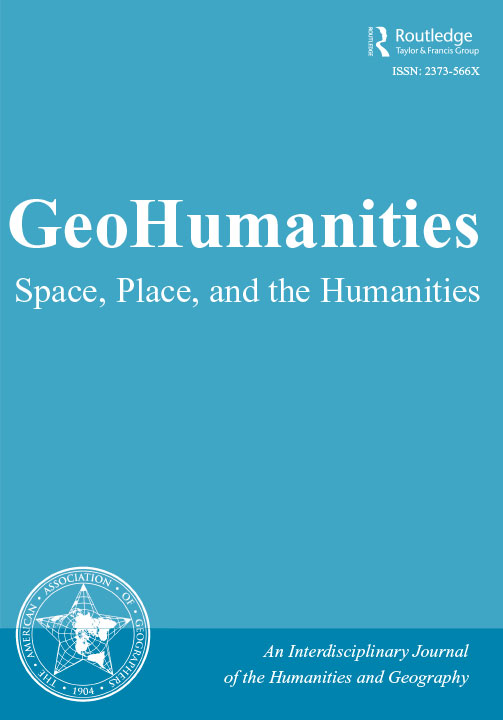News from the Human-Environment and Geographical Sciences (HEGS) Program at the National Science Foundation (NSF), September 2020
Update 9/15/2020: In response to concerns raised by members of the AAG, the NSF has clarified its announced changes to the Human-Environment and Geographical Sciences program (HEGS), formerly known as the Geography and Spatial Sciences program (GSS).
AAG appreciates the time many of our members have taken to bring questions and concerns about the program changes to light. The NSF’s Program Officers are available to provide answers and assistance in preparing proposals (email for the program and program guidelines are at the end of this clarification).
Clarification from National Science Foundation: The repositioning of the Geography and Spatial Sciences program (GSS) to the Human-Environment and Geographical Sciences program (HEGS)
Over the past several years, NSF’s Directorate for Social, Behavioral and Economic Sciences (SBE) has repositioned several programs to better reflect the science supported by those programs and to make their value more apparent to a broader audience. Nearly all NSF program names draw attention to what researchers do or why it matters. As a result, most programs are no longer named solely after disciplines. These changes bring SBE into closer alignment with long-held program naming practices at the rest of NSF. This provides more opportunities for researchers to conduct innovative and valuable work and for NSF to more effectively communicate the value of the research that it supports.
The name change from Geography and Spatial Sciences (GSS) to Human-Environment and Geographical Sciences (HEGS) represents a more holistic perspective that considers the broad range of topics that enhance fundamental geographical knowledge, concepts, theories, methods and their application to societal problems and concerns. With the increase in convergent programs across NSF directorates such as Dynamics of Integrated Socio-Environmental Systems (DISES), Coastlines and People (CoPe), Sustainable Regional Systems (SRS) and Navigating the New Arctic (NNA), geographers stand uniquely situated to participate in such endeavors. At the same time, the inclusion of the term “Geographical Sciences” in the new program title signals the sustained and continued support of geography. In line with NSF’s mandate to support basic scientific research, HEGS-supported projects are expected to yield results that enhance, expand, and transform fundamental geographical/spatial theory and methods, and produce broader impacts that benefit society.
HEGS (previously GSS, and before that Geography and Regional Science-GRS) recognizes that geography is a broad discipline that includes the natural sciences, the social sciences and the humanities. While HEGS continues to consider proposals that cover research in human geography, HEGS does not fund research that engages predominantly humanistic, non-scientific framings and methods. This has always been the case and is not a new policy or a change in requirements for proposals submitted to NSF. HEGS has always stressed to PIs that their proposals must focus on the scientific aspects of a project, including clearly articulated questions or hypotheses, methods and a corresponding data analysis plan that can provide answers to those questions. HEGS program staff have noted a steady increase in predominantly non-science-oriented proposals. It is important to note that this repositioning is not a judgement on the value of such scholarship or its practitioners. HEGS will continue to accept proposals that creatively integrate scientific and critical approaches. Prospective PIs are encouraged to visit the HEGS website and explore the diverse research and PIs that have been recently funded by the program.
The repositioning of HEGS also reflects the breadth of research appropriate for submission to the programs. HEGS is situated in the Behavioral and Cognitive Sciences Division of SBE and thus research projects submitted to the program must illustrate their relevance and importance to people and societies. If a proposal is not well-connected to social or human dimensions, the proposal could be more appropriate for other programs at NSF. For example, bio-physical science is supported by programs in the Division of Environmental Biology in NSF’s Biological Sciences Directorate, and physical science is supported by programs in the Division of Earth Sciences (e.g. the Geomorphology and Land-use Dynamics Program) in the Geosciences Directorate.
Potential investigators are encouraged to contact a HEGS program officer with questions about whether their proposal would be considered by HEGS. Email hegs-info [at] nsf [dot] gov with a two-page (maximum) attachment outlining the research question(s) or hypotheses, the intellectual merit and anticipated broader impacts of the project, as well as the methods and anticipated data and analysis.
Scott M. Freundschuh, HEGS Program Officer
Sharmistha Bagchi-Sen, HEGS Program Officer
Antoinette WinklerPrins, Former GSS Program Officer and current Deputy Division Director in BCS
overview of guidance
***
Original announcement: Announcing Staff Changes in HEGS
 Scott Freundschuh continues as HEGS Program Director.
Scott Freundschuh continues as HEGS Program Director.
BIO: Scott M. Freundschuh holds a Ph.D. in geography from SUNY Buffalo. Scott is a cognitive geographer, specializing in spatial cognition as it relates to types of spatial knowledge and their structures, geographic scale, spatial concept development and understanding, and spatial skills development. He is a faculty member at the University of New Mexico.
Sharmistha Bagchi-Sen joins HEGS as new Program Director.
BIO: Sharmistha Bagchi-Sen holds a Ph.D. in geography from the University of Georgia. Her research interests include the geography of innovation, geographic implications of industrial evolution with a focus on bio-pharmaceuticals, agri-bio, and bioenergy sectors, energy transitions, foreign direct investment in the United States, and socioeconomic implications of urban-regional population shrinkage. She is a faculty member at the State University of New York-Buffalo.
Kendra McLauchlan is now a permanent Program Director in the Division of Environmental Biology and works closely with HEGS.
BIO: Kendra K. McLauchlan holds a Ph.D. in ecology from University of Minnesota. Kendra is a physical geographer, specializing in reconstructing North American paleoenvironments as recorded in lacustrine sediments and dendrochronological records. She holds an adjunct appointment as a faculty member in Geography and Geospatial Sciences at Kansas State University.
HEGS Program Director Jacqueline (Jackie) Vadjunec has returned to Oklahoma State University where she has been promoted to full professor. Congratulations Jackie!
From GSS to HEGS – Why the Change?
The change from Geography and Spatial Sciences to Human-Environment and Geographical Sciences at NSF is the result of efforts within the Social and Behavioral Sciences Directorate to reposition programs so that they align with the mission of the Directorate. Geography is a broad discipline, spanning multiple paradigms and topics ranging from purely process-oriented biophysical geography to post-modern, humanistic geography. However, not all geographic scholarship is a good fit at the National Science Foundation (NSF). The name change articulates more clearly the human, environmental, and geographical sciences that are appropriate for funding at NSF. This change reflects NSF’s mission to “promote the progress of science; to advance the national health, prosperity, and welfare; and to secure the national defense” and also HEGS’s location in the Division of Behavioral and Cognitive Sciences (BCS) in the Directorate for Social, Behavioral, and Economic Sciences (SBE).
In general, research that is predominantly post-modern, post-structural, humanistic etc., is not a good fit for NSF. As noted in the solicitation, “A proposal to the HEGS Program must explain how the research will contribute to geographic and spatial scientific theory and/or methods development, and how the results are generalizable beyond the case study.” If research is more biophysical or process oriented, but aspatial and/or not well-connected to social or human dimensions, the proposal could be more appropriate for other programs at NSF. For example, bio-physical science is supported by the programs in the Division of Environmental Biology (DEB) directorate, and physical science is supported by the Geomorphology and Land-use Dynamics (GLD) program. When considering the fit of research at NSF, it is useful to understand the overall institutional architecture of the Foundation.
Potential investigators are encouraged to contact a HEGS program officer with questions regarding the fit of their research in HEGS. Please send an email inquiry to hegs-info [at] nsf [dot] gov with no more than a two page attachment that outlines the research question(s) or hypotheses, the intellectual merit and anticipated broader impacts of the project, as well as the methods and anticipated data and analysis.
You can find the new HEGS solicitation here.
You can find the HEGS FAQ here.
Other Funding Opportunities at NSF
Dynamics of Integrated Socio-Environmental Systems (DISES) Program
Navigating the New Arctic (NNA) Program
Coastlines and People (CoPe) Program
Contact information for HEGS Program Directors is hegs-info [at] nsf [dot] gov.


